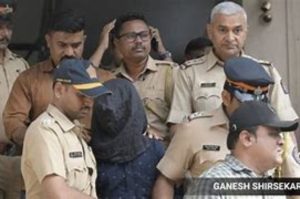Explore the Saif Ali Khan attack case in detail — from the shocking robbery attempt to the arrest of Bangladeshi national Shariful Islam, forensic evidence, and trial updates.
In January 2025, Bollywood actor Saif Ali Khan was attacked in his Mumbai residence during an attempted robbery. The incident shocked the nation and led to a complex investigation spanning multiple states. This article provides a detailed account of the events, the accused’s background, the investigation, and the legal proceedings that followed.
Saif Ali Khan Attack Case: The Incident
On January 16, 2025, an intruder broke into Saif Ali Khan’s 12th-floor apartment in the Satguru Sharan building, Bandra West, Mumbai. The intruder, later identified as Shariful Islam, attempted to rob the actor. A confrontation ensued, during which Saif sustained multiple stab wounds, including damage to his thoracic spine. He was rushed to Lilavati Hospital and underwent surgery, remaining under treatment for five days before being discharged on January 21.
The Accused: Shariful Islam

Shariful Islam, a Bangladeshi national, illegally entered India around seven months prior to the attack. He crossed the Dawki river in Meghalaya and used multiple aliases, including Bijoy Das, to move around undetected. Islam stayed in various locations in West Bengal before arriving in Mumbai, where he sought employment without documentation
Saif Ali Khan Attack Case: Investigation and Arrest
Mumbai Police arrested Islam on January 19, 2025, in Thane, Maharashtra. The investigation revealed that he had used a SIM card registered under the name of a West Bengal resident, Khukumoni Jahangir Sekh, whose phone he had allegedly stolen. Police recorded statements from over 40 witnesses, including Saif Ali Khan, his wife Kareena Kapoor, staff members, and the autorickshaw driver who transported Saif to the hospital.
Saif Ali Khan Attack Case: Forensic Evidence
A 1,000-page chargesheet filed by Bandra Police included substantial forensic evidence linking Islam to the crime. This evidence comprised DNA matches between Saif’s blood and blood found on a T-shirt allegedly worn by Islam, as well as on the handle of the knife used in the attack. Fingerprint analysis further corroborated Islam’s involvement.
Saif Ali Khan Attack Case: Background and Motive
Islam’s father, Md Ruhul Amin Fakir, stated that his son left Bangladesh in April 2024 due to political instability and a bleak future in his village. Islam aimed to find employment in India and eventually move elsewhere. He initially worked in a hotel in West Bengal before relocating to Mumbai.
Additional Offenses
Further investigation revealed that Islam had committed theft at his maternal uncle’s house in South 24 Parganas, West Bengal, in July 2024. After stealing money, he was expelled from the household. This relative informed the police about Islam’s Bangladeshi nationality and provided details about his family.
Legal Proceedings
Islam was charged with attempted murder, illegal entry into India, and theft. The comprehensive chargesheet, supported by forensic and testimonial evidence, formed the basis for the prosecution’s case. The trial proceedings are ongoing, with the court examining the extensive documentation provided by the police.
Impact and Security Concerns
The attack on a high-profile actor like Saif Ali Khan raised concerns about security measures for celebrities and the challenges posed by illegal immigration. Authorities have since reviewed security protocols and emphasized the need for stringent checks to prevent similar incidents.
The Saif Ali Khan attack case underscores the complexities of cross-border crimes and the importance of thorough investigative procedures. The collaborative efforts of law enforcement agencies across states have been pivotal in bringing the accused to justice. As the legal process unfolds, the case continues to be a focal point in discussions about security and immigration policies in India.
DO FOLLOW:
Also read: Home | Channel 6 Network – Latest News, Breaking Updates: Politics, Business, Tech & More

